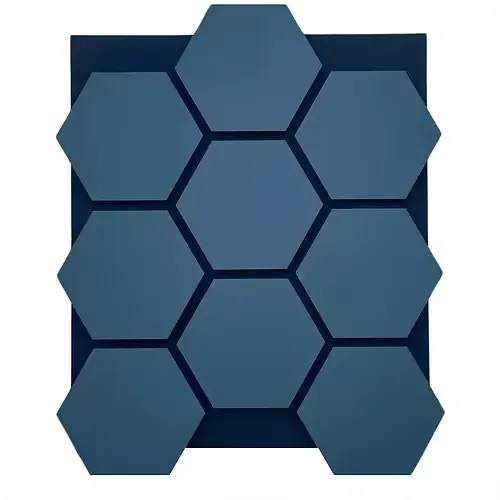The Benefits of Felt Panels for Acoustic Treatment
In recent years, the demand for effective acoustic treatment solutions in various environments—be it homes, offices, or public spaces—has skyrocketed. Among these solutions, felt panels have emerged as one of the most popular choices for improving sound quality and aesthetics. This article explores the benefits and applications of felt panels in acoustic treatment, highlighting why they are becoming a staple in modern design.
What Are Felt Panels?
Felt panels are typically made from synthetic or natural fibers and are designed to absorb sound waves, reducing unwanted noise and echoes in a space. Available in a range of colors, sizes, and thicknesses, these panels can be easily customized to fit the design requirements of any interior. Their versatility allows them to be used in residential, commercial, and industrial settings.
Sound Absorption Properties
One of the primary reasons for choosing felt panels is their impressive sound absorption capabilities. When sound waves hit a hard surface, they are reflected, leading to echoes and a lack of clarity in speech and music. Felt panels, with their porous structure, work by trapping sound waves, thus minimizing reflections and improving overall sound quality. This makes them particularly effective in spaces such as recording studios, classrooms, conference rooms, and restaurants, where clear communication and auditory clarity are essential.
Aesthetic Appeal
In addition to their acoustic benefits, felt panels offer an aesthetic advantage that many other soundproofing materials lack. Their soft, textured finish provides a warm, inviting look that can enhance the overall design of any space. Available in a spectrum of colors, these panels can serve as beautiful design elements, contributing to the ambiance of the room. Whether you prefer bold, vibrant hues or subtle, neutral tones, felt panels can be tailored to complement your interior decor.
felt panels acoustic

Ease of Installation
Felt panels are also known for their ease of installation. Unlike traditional acoustic treatments, which may require complex mounting systems or professional installation, felt panels can often be installed by anyone with basic DIY skills. They can be affixed to walls or ceilings using adhesive strips, screws, or hooks. Additionally, their lightweight nature makes them easy to handle and reposition as needed. This feature not only saves time and labor costs but also allows for flexibility in design, enabling users to experiment with different layouts until they find the perfect arrangement.
Sustainability
With the growing emphasis on sustainability in design and construction, felt panels have gained popularity for their eco-friendly potential. Many felt products are made from recycled materials, contributing to a reduced carbon footprint. By choosing felt panels, individuals and businesses can contribute to environmental conservation while still meeting their acoustic needs. Moreover, the longevity of felt panels means they won’t need frequent replacement, further minimizing waste.
Versatile Applications
The versatility of felt panels allows them to be utilized in a wide range of applications. In schools, they can enhance the learning environment by reducing distracting sounds, creating a more focused atmosphere for both students and teachers. In offices, they can mitigate noise levels, fostering better communication and collaboration among employees. In public spaces, such as airports and malls, felt panels can help manage crowd noise, creating a more pleasant experience for visitors.
Conclusion
Felt panels represent an innovative and stylish solution for acoustic treatment. Their sound absorption qualities, aesthetic appeal, ease of installation, sustainability, and versatility make them a preferred choice for many architects, designers, and consumers alike. Whether you’re looking to improve the sound quality of your home theater, create a quieter office, or enhance the ambiance of a restaurant, felt panels can play a vital role in achieving these goals. As awareness of the importance of acoustics continues to grow, felt panels are likely to remain at the forefront of acoustic design solutions.
